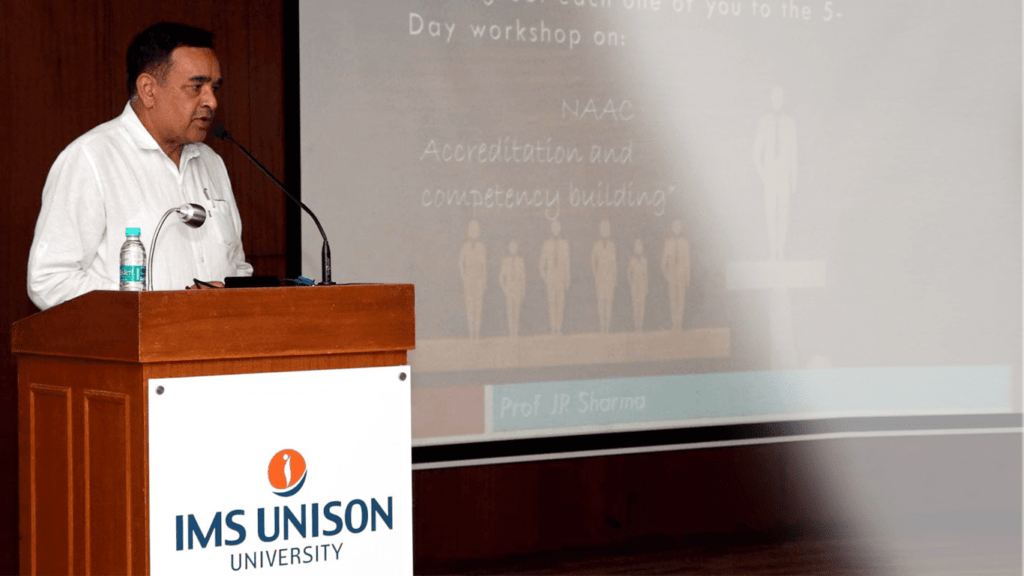It seems like a good sign that NAAC and Ministry of Higher Education is taking due time to give NAAC a much needed new Avtaar. It is sincerely hoped that the wait would be its worth and won’t end up in a disappointment with NAAC process and its SSR, one more time remaining susceptible to gaming by some HEIs.
The issues facing institutional accreditation in India are indeed peculiar and full of challenges. A highly fragmented system is not easy to cobble with a single thread. NEP 2020 requires NAAC assessment decentralisation to pass on to credible private professional bodies but that comes with its own challenges of possible dilution. A largely inadequate performance of the DVV teams is perhaps, a case in point. There is a yet another major issue. The stakes of attaining a top NAAC grade leading to maximum autonomy are far too higher, and punishment for faking and fudging of data and violation of ethics are woefully little and rarely enforced. It encourages breech by a few unscrupulous. A yet another challenge lies in reducing the number of accreditations from 2 to 1. Instead, it is getting enhanced from 2 to 3 with a binary added to the Levels and NBA remaining in the system.
If NAAC has to tighten its grip of a rigour, a data by ONOD system won’t be enough. A realtime, direct and surprise verification of facts, physically or through online video demonstration by institutes could be one possible solution. The other would come from the AI tools. ONOD might be somewhat acceptable for ranking but NOT for an accreditation. As said earlier, the stakes, like grant of category and autonomy are far too higher in the NAAC.
I wish to present one example of how NAAC could possibly ensure rigour and sanctity of its process to a greater extent. I take an example of the very first quantitative metric of the current SSR of a general university.
Metric 1.2.1 : Percentage of New Courses introduced in the last 5 years and giving 25% new course highest benchmark A++ weightage.
This metric was susceptible to gaming, easily. NAAC had no mechanism to verify the authenticity of Minutes of meeting of BOS and ACs whether actual or written from the back dates. There was also no system for a critical validation of syllabus of the new courses for quality, relevance to its program, and whether befitting faculty/expert were present in the institutes to teach the courses, particularly in the emerging areas of AI, digital and tech fields. This metric lacking rigour was grabbed with both the hands by many HEIs. There were other grave weaknesses of this metric.
Now, the new version of NAAC might like to dump this metric, and instead introduce one suggested for the universities, as under :
Metric : Courses run on AI, Blockchain, Semiconductors, Cloud computing, Data Analytics, Cyber Security and other such digital advances where the future jobs lie
Assessment Criteria:
1. Courses with scheme and syllabus. Syllabus to be critically examined for contemporary content, rigour and relevance by the NAAC expert committee-10 weightage.
2. Particulars of Faculty/expert teaching these futuristic courses requiring special competencies. Evidence of related domain qualification, biometric physical presence during classes and past experience in the field. NAAC expert committee to attend at least one 45 minutes online session/topic of two to three new courses, on a surprise date and time of its choosing on the pre-shared weekly teaching programme schedule of the teacher with at least 30 minutes advanced notice to the teacher, and verify teaching competency Weightage-10.
3. Expert Committee to scrutinise the level of rigour of question papers/assignments. If lacking rigour, assign lower grade on the scale of 10 (Weightage 10).
4. Results of students of a class in each written and practical assignment including field/industry projects and internships. The weightage of score to be normalised on the relative importance of assignment. For example, Blooms higher order learning questions and practical assignments/industry-led skilling to get higher weightage. NAAC expert committee to ascertain graduated weightage on the scale of 10. (Weightage 10)
5. % age of Pre-placement offers received by students by industry while on industry internships/industry projects, specific to the above stated specialised domains (Applicable to technical and engineering streams). 40% pre-offers of total attendees to attract highest level and further four lower levels reduced by 10% each Weightage-10).
👉🏿Please note that overall campus placements of a batch will include this, and all other remaining placements and would be additionally rewarded in a separate metric.
👉🏿The above is one suggested example of ensuring a possible rigour and relevance which is largely free from manipulation. Accordingly, NAAC must insulate other metrics. It is better to have a few metrics of high quality impact but with utmost rigour, not easily susceptible to fudging and misrepresenting. For example, the current practice of the use of Inflibnet is so ideal to validate research publications. NAAC will have a good chance to prove that it is indeed a really superior thinking body worth the highest trust.
Prof JR Sharma-The views expressed are personal and can be further modified/improved.












